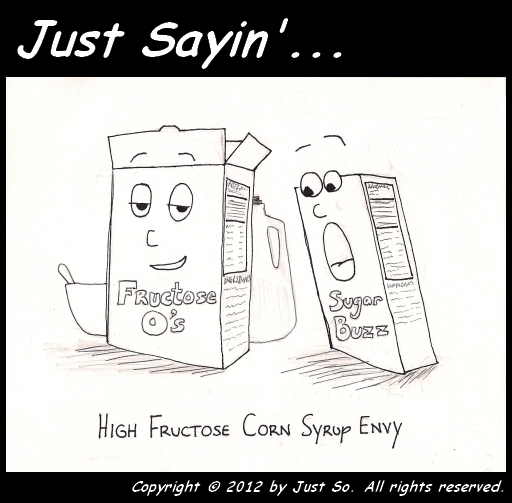What's Up with HFCS?
We just can't seem to get enough high-fructose corn syrup. It's in foods ranging from yogurt to canned fruit, from ketchup to breakfast cereal. Yet many consumers are beginning to question the health effects of HFCS. Do we really need to be concerned?
The Corn Refiners Association says no. The association offers two websites, SweetSurprise.com and CornSugar.com, dedicated to the promotion of corn sugar. The websites assure consumers that your body can't tell the difference between corn sugar and cane sugar. (For a summary, see their one-minute promotional video.)
A 2010 study at Princeton University says otherwise. The study found significant weight gain in lab animals when given HFCS for a significant period of time. The animals also experienced abnormal increases in body fat, especially in the abdomen.
According to the Corn Refiners Association, HFCS contains no artificial ingredients. This implies the product is natural. If the product were truly natural, wouldn't we be able to take an ear of corn, press on the kernels, and extract HFCS? The process, however, is far more complicated.
Corn is milled to produce corn starch. The starch is processed to yield corn syrup. The glucose which is produced is transformed into fructose with the addition of enzymes. The resulting syrup (after enzyme conversion) contains approximately 42% fructose and is called HFCS 42. Some of the 42% fructose is then purified to 90% fructose, HFCS 90.
The enzymes, however, are industrially produced. Alpha-amylase is produced by a bacterium, Bacillus sp. in most cases. An enzyme called glucoamylase breaks the sugar chains down even further. Unlike alpha-amylase, glucoamylase is produced by Aspergillus, a fungus, in a fermentation vat.
Many of the enzymes are genetically modified, as is the corn itself in most cases.
Furthermore, the synthetic glutaraldehyde is used in the manufacturing process. This chemical is used as a biocide in oil pipelines, a slimicide in paper manufacturing, a preservative in cosmetics, a disinfectant in animal houses, and is among the chemicals used for embalming. The Centers for Disease Control warns of adverse health effects as the result of exposure to glutaraldehyde.
Is all of this enough to merit avoiding HFCS? Maybe it's time to choose a better alternative than those competing breakfast cereals shown above.







0 comments :
Post a Comment